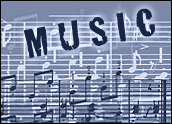
GarageBand is an outstanding addition to Apple Computer’s original iLife software suite.
What the program does is give musicians and non-musicians alike a tool to create music on a computer.
Even before the introduction of GarageBand, there were programs in the PC world that worked in ways similar to the Apple offering, but they lacked its simplicity and visual elegance.
That’s changed, though, with the introduction of Session (US$49) byM-Audio, which is part of Tewksbury, Mass.-based Avid.
Software, Hardware Combo
Originally only available with one of M-Audio’s hardware products, the company recently released the program as a standalone application.
Included with the software is a piece of hardware that looks like aUSB thumb drive with a short lead. That’s the M-Audio Micro.
The device is a high-performance audio interface that uses a driver technology called “ASIO” to improve the performance of Session by providing “ultra-low latency.”
Latency occurs when a computer has trouble keeping up with the processing demands of a program. The end result is a pause between the time you tell your computer to do something and its performance of the act.
The USB device also acts as a software key. Session won’t run unless the hardware is attached to the computer it’s running on.
Easier Than GarageBand
For a musically challenged person like myself, I found Session very easy to use — even easier than GarageBand.
When you launch Session, it asks you if you want to open an old composition or start a new one. If you create a new one, you need to set some parameters before you begin. The project needs a name and some basic music stuff: beats per measure, duration of a beat, key, key scale and tempo.
If your musical knowledge is as limited as mine, it’s wise to stick with the defaults: four beats to a measure, quarter note gets one beat, key of C, chromatic scale and tempo of 108.
Music From Loops
Next, you’re given a set of options. You can play and record your guitar or keyboard, record vocals and instruments, record from a stereo line-in or compose with MIDI loops.
You can also create music with audio loops. For the musically bereft like me, that’s the way to go.
The program has a library with some 2000 loops. A loop is a snippet of music. It could be a bass line, for instance, or a guitar riff.
There are loops in the program for an assortment of instruments: bass, percussion, drums, guitar, harmonica, organ, piano, strings, synthesizer, even vinyl.
Laying Down Tracks
When you start to put your composition together, you’re asked to create a track. In the track, you’re asked to choose an instrument for the loops you’ll be putting in the track and a musical style.
Styles include blues, country, electronic, funk, hip hop, jazz, Latin pop, ballad, R&B, alternative rock, metal and pop.
After you’ve defined your initial track, you can add tracks, instruments and styles from the program interface.
Beside each track is a set of tools adjusting its aspects. You can change its volume, for example, or change its stereo position from both speakers to right or left. You can also mute a track or let it play solo.
As Addictive as a Video Game
You create a composition by dragging loops to multiple audio tracks. You might have your bass loops in one track, drums in another, and so forth.
The length of a loop can be extended by placing the cursor on the end of a loop and dragging it. Before choosing a loop, you can “audition” it by clicking an icon to its right.
When you’re finished with a composition, you may export it from the program in WMA or WAV format.
While Session is made for musicians, non-musicians can quickly learn how to use the program, and once they learn it, they’ll find it as addictive as a video game.




















































